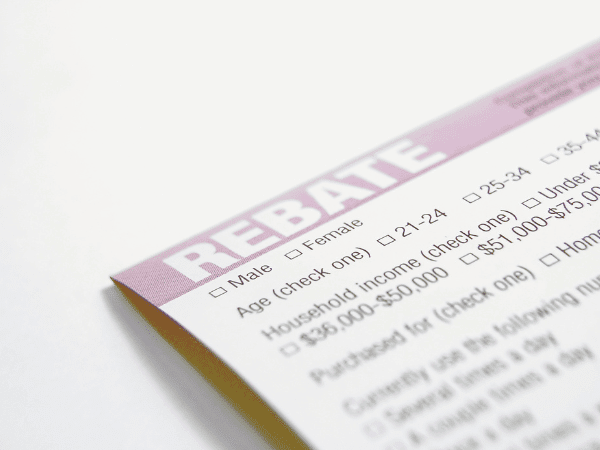No later than by July 31st of each calendar year, insurers must submit a report detailing premium expenditures made throughout the prior year to the Department of Health and Human Services (“HHS”). If any carrier fails to meet underlying medical loss ratio (“MLR”) standards, they must provide rebates to qualifying insurance consumers. The deadline associated with the making of such rebates is regulatorily established as each September 30, immediately subsequent to the ending of each such MLR reporting period. The MLR applies to fully insured plans and does not extend to self-funded health insurance plans. Employers must familiarize themselves with the regulations surrounding these rebates and decide how to distribute them on a timely and accurate basis.
Employer Action Items
- Understand where and how MLR rules are outlined in your company policies, as required under the Affordable Care Act (ACA);
- Determine the plan(s) to which such the MLR rebates apply;
- Determine whether each refund is considered a “plan asset” consistent with the provisions and requirements of ERISA (in other words, determine the amount of the rebate that relates to employee contributions versus employer contributions);
- Once an amount is classified as a plan asset, employers must allocate such plan asset funds among current and/or former eligible participants on a timely, accurate, and consistent basis;
- Determine the method for distributing the rebate to plan participants (and as must be memorialized in the governing plan documents);
- Document all decisions and actions taken by the employer in relation to the MLR rebate process;
- Communicate with participants, informing and explain the rebate process; specifically, describing how and when they will be distributed;
- Any part of any such rebate that is deemed to be a plan asset must be allocated and/or distributed within three months of receipt, so as to avoid activating ERISA’s trust requirement; and,
- If necessary, consult with qualified legal professionals to ensure proper administration of the rebates as per state and federal laws.
Summary
Upon receiving an MLR refund, employers must decide how to distribute such dollars. Any rebate amount that meets the definition of a “plan asset” under ERISA regulations must be utilized for the exclusive purpose of provided benefits to the plan’s participants and beneficiaries. Furthermore, employers are required to allocate any such portion of the rebate within three months of receipt, so as to avoid activation of ERISA’s trust requirement.
MLR Standards
The ACA requires health insurers to spend a minimum percentage of their premium dollars on medical care and health care quality improvement. This percentage is:
- 85% for issuers in the large group market; and
- 80% for issuers in the small and individual group markets (please note that the definition of small group market varies state-by-state).
States may set higher MLR standards than the federal 80-85% thresholds.
MLR Deadlines
- Insurers are required to submit their MLR statistics to HHS by July 31st after the completion of an MLR reporting year.
- Rebates must be issued by September 30th, following the conclusion of the MLR reporting year.
- Typically, any portion of the rebate considered as a plan asset under ERISA regulations should be utilized within three months of receipt.
Accrual of MLRs
If an insurer fails to satisfy the MLR standard, it must provide a rebate to the policyholder – generally, the employer who sponsors the group health plan. For currently enrolled members, the insurer can provide rebates via:
- A one-time lump-sum payment, or
- A credit against the premium, effectively reducing the premium amount due.
To avoid having to pay a rebate, an insurer can implement a “premium holiday” during the MLR reporting year if it discovers that its MLR is falling below the required percentage. This approach, which HHS permits, suspends premium payments for a pre-defined period. However, note that it can only be used if also permitted under state statutory law. Additionally, insurers opting for premium holidays must satisfy additional requirements, such as providing the holiday in a non-discriminatory manner and refunding any overpayment of premiums on a timely, accurate, and nondiscriminatory basis.
ERISA Plans
Most, but not all, group health plans are governed by ERISA. Employers with ERISA plans should not assume that they can simply retain an MLR rebate. Importantly, rebate dollars that qualify as a plan asset under ERISA must be used for the exclusive purpose of providing benefits to the plan’s participants and beneficiaries.
Defining MLRs as Plan Assets
As provided under certain Treasury Regulations (see: TR 2011-4), in the absence of specific plan or policy language pertaining to such distributions, the categorization of the rebate as a plan asset partially hinges on the identity of the policyholder and the source of premium payments.
If the policyholder is the plan or its trust, the policy becomes a plan asset, and the entire rebate must be treated as such. However, if the employer is the policyholder – as is usually the case – the portion of the rebate to be treated as a plan asset is contingent on who paid the insurance premiums. For example:
- If the premiums were paid entirely out of trust assets, the entire rebate amount is a plan asset;
- If the employer paid 100% of the premiums, the rebate is not a plan asset, and the employer can retain the entire rebate amount;
- If participants paid 100% of the premiums, the entire rebate amount is a plan asset; and
- If the employer and participants each paid a fixed percentage of the premiums, the percentage of the rebate equal to the percentage of the cost paid by participants is a plan asset.
Additionally, if the employer was obligated to pay a fixed amount while the participants paid any additional costs, the part of the rebate that does not surpass the participants’ total contributions during the MLR reporting period, would be considered a plan asset. Conversely, if the participants paid a fixed amount and the employer took care of additional costs, the portion of the rebate that does not exceed the total contributions from the employer during the MLR reporting year would not be considered a plan asset.
However, according to the DOL’s guidance, employers are typically not permitted to keep a rebate amount that is more than the total premiums and other plan-related expenses paid by the employer.
Utilization of MLRs – Guidelines for Plan Assets
When an employer confirms that an MLR rebate, wholly or in part, qualifies as a plan asset, they must decide how to allocate this rebate for the exclusive purpose of providing benefits to the plan’s participants and beneficiaries. The following methods are available for distribution of rebates:
- The rebate can be distributed to eligible participants following a reasonable, fair, and objective allocation method. If the employer assesses that the cost of disbursing a proportion of the rebate to former participants is roughly the same as the rebate amount, the fiduciary may choose to limit the rebates to current participants. Also, an allocation is still considered fair even if it does not precisely mirror the premium activities of all participants.
- If the employer finds that distributing rebates to participants is not cost-effective due to small amounts, or if it may result in tax implications for the participants, the employer can use the rebate for other permissible plan purposes. These could include applying the rebate to future premium payments for participants or enhancing benefits.
In instances where a plan provides benefits under multiple policies, the employer should ensure that the rebate from a specific policy is allocated solely to the participants covered by that policy. As per the DOL, using rebates acquired from one plan to favor the participants of another plan would be a breach of fiduciary duty.
Deadline for Distributing MLRs
ERISA typically mandates that any rebate qualifying as a plan asset be held in trust. However, most group health plans receiving rebates do not maintain trusts, given that their premiums are paid from the employer’s general assets, including employee payroll deductions. The DOL grants an exemption from the trust requirement to the extent premium rebates are distributed within three months from their receipt.
Moreover, instructing a carrier to apply the rebate to future premium payments for participants or towards enhancements of benefits approved by the plan sponsor would eliminate the necessity for suspension in trust and, under certain circumstances, may be consistent with the employer’s fiduciary duties. Employers opting for this approach should consult with their insurance issuers to setup a process for managing rebates.
Non-federal Governmental Plans
Group health plans maintained by non-federal government employers (such as state and local governments) are not subject to ERISA’s fiduciary standards. HHS rules dictate that employers must use the portion of rebate attributed to the premium paid by employees to:
- Decrease the subscribers’ annual premium for the following policy year for all subscribers covered under any group health policy offered by the plan;
- Reduce the subscribers’ annual premium for the following policy year, solely for those subscribers covered by the group health policy on which the rebate was based; or
- Dispense a cash refund exclusively to the subscribers covered by the group health policy on which the rebate was based.
In each of these scenarios, the rebate is used to lower premiums or is paid out to subscribers who are enrolled in the year when the rebate is actually paid out, as opposed to the MLR reporting year when the rebate was calculated. Regardless of the method employed, the policyholder has the option to:
- Distribute the reduction or refund equally amongst the subscribers;
- Divide it based on each subscriber’s specific contributions towards the premium; or
- Distribute it in a fashion that fairly represents each subscriber’s contributions towards the premium.
Notably, HHS has made it clear that participants of non-federal governmental or other group health plans not governed by ERISA should receive the benefit of MLR rebates within three months of receipt of the rebate by their group policyholder, mirroring the provision for participants of group health plans that are subject to ERISA.
Church Plans
HHS’ interim final rules regarding non-governmental, non-ERISA plans, such as church plans, state that a carrier can make a rebate payment to the policyholder (typically the employer sponsoring the plan) if it obtains written assurance from the policyholder that the rebate will be used to benefit existing subscribers using one of the above-mentioned options for non-federal governmental plans. In the absence of this written assurance, carriers must directly pay the rebate to employees covered under the policy during the MLR reporting year.
Furthermore, HHS has stressed that participants in non-ERISA plans should receive the benefit of the MLR rebate within three months of when the plan sponsor receives the rebate.
Tax Implications of Rebates
The IRS has issued a series of frequently asked questions (FAQs) that explain the tax implications of MLR rebates. Generally, the tax impact depends on whether employees paid their premiums on an after-tax or pre-tax basis.
After-tax Premium Payments
If employees paid their premiums on an after-tax basis, the rebate generally does not constitute taxable income to the employees and is not subject to employment taxes. This tax treatment applies whether the rebate is paid in cash or is used to reduce premiums for the current year. However, if an employee claimed premium payments as deductions on their taxes for the previous year, the rebate becomes taxable to the extent the employee received tax benefits from the deduction.
Pre-tax Premium Payments
If employees paid their premiums on a pre-tax basis under a cafeteria plan, the rebate will generally be considered taxable income to the employees for the current year and will be subject to employment taxes. This applies whether the rebate is paid in cash or is used to reduce premiums for the current year. A reduction in the current year’s premium reduces the amount an employee can contribute on a pre-tax basis, resulting in a corresponding increase in the employee’s taxable salary, which is also subject to employment taxes.
Additional Resources
HHS issued interim final rules implementing the ACA’s MLR requirements.
The Department of Labor (DOL) issued Technical Release 2011-4 (TR 2011-4) to explain how ERISA’s fiduciary duty and plan asset rules apply to MLR rebates.
MLR FAQs: https://www.irs.gov/newsroom/medical-loss-ratio-mlr-faqs
If you are interested in more information about the MLR rebate rules, you should visit the HHS website at: http://cciio.cms.gov/programs/marketreforms/mlr/index.html and http://cciio.cms.gov/resources/factsheets/mlrfinalrule.html
For more information
We’re ready when you are. Get in touch and a friendly, knowledgeable Baldwin advisor is prepared to discuss your business or individual needs, ask a few questions to get the full picture, and make a plan to follow up.
This document is intended for general information purposes only and should not be construed as advice or opinions on any specific facts or circumstances. The content of this document is made available on an “as is” basis, without warranty of any kind. The Baldwin Insurance Group Holdings, LLC (“The Baldwin Group”), its affiliates, and subsidiaries do not guarantee that this information is, or can be relied on for, compliance with any law or regulation, assurance against preventable losses, or freedom from legal liability. This publication is not intended to be legal, underwriting, or any other type of professional advice. The Baldwin Group does not guarantee any particular outcome and makes no commitment to update any information herein or remove any items that are no longer accurate or complete. Furthermore, The Baldwin Group does not assume any liability to any person or organization for loss or damage caused by or resulting from any reliance placed on that content. Persons requiring advice should always consult an independent adviser.
The Baldwin Group offers insurance services through one or more of its insurance licensed entities. Each of the entities may be known by one or more of the logos displayed; all insurance commerce is only conducted through The Baldwin Group insurance licensed entities. This material is not an offer to sell insurance.






